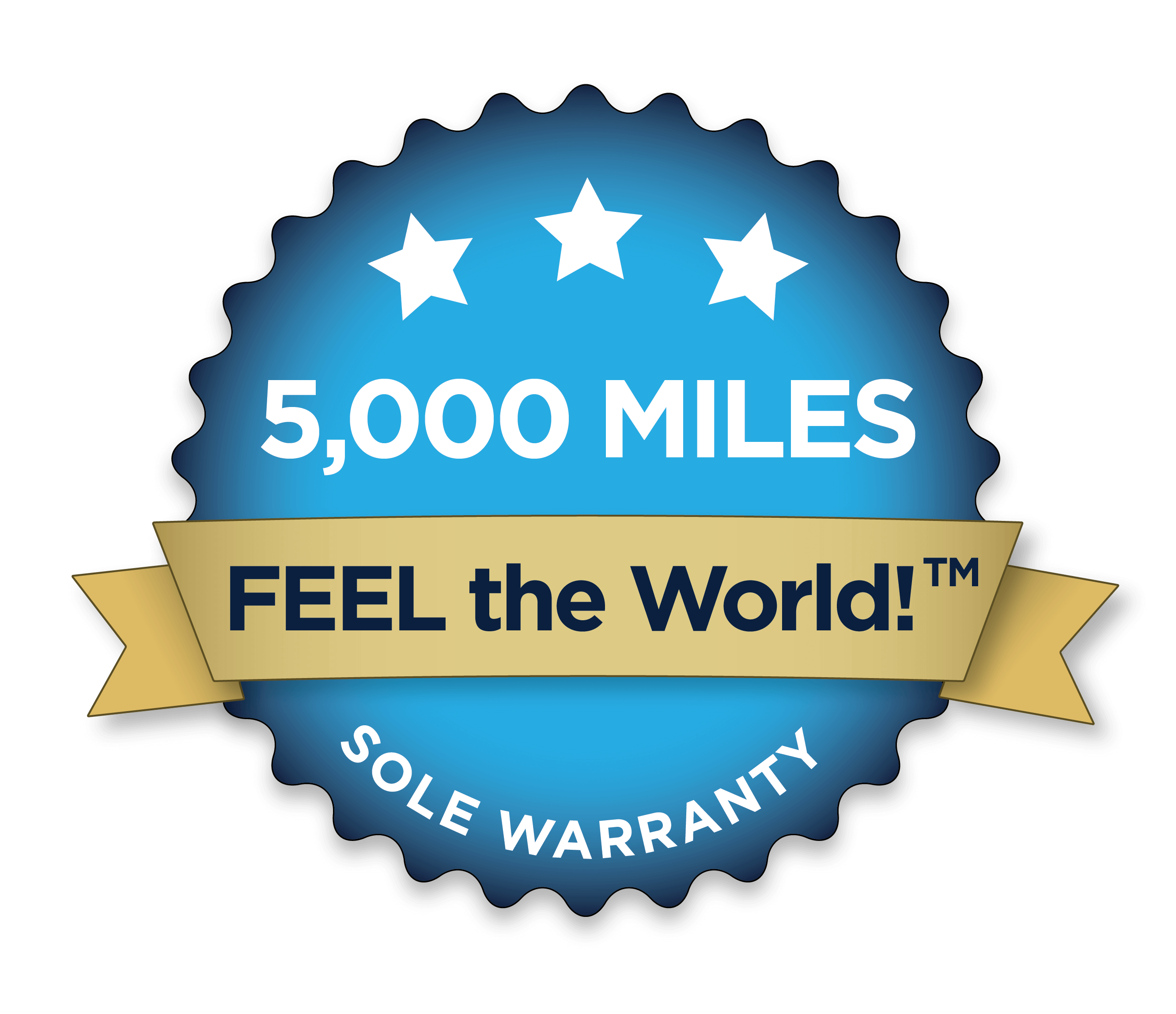Okay, so the big question is, “WHY use huarache, the Tarahumara running sandals?”
The answer is pretty obvious, but there are some important-yet-surprising pieces to the puzzle.
The obvious answer about huarache is: It’s the closest thing there is to barefoot running, without some of the hazards of barefoot running. Namely, you’re adding a layer of protection to your feet that bare skin simply can’t give you, no matter how well conditioned your feet are.
Especially with the 4mm Vibram Cherry sole material we use in our huarache kits and custom huaraches, you get what I like to call “better-than-barefoot.” The soles are so flexible it’s like having nothing on, so light, you barely notice them… except it’s blissfully clear that you’re not getting scraped up, cut up, scratched up and dirty like you would if it was just your tootsies on the ground.
That said, I’m not going to say “Don’t run barefoot and run with huarache running sandals instead!”
Why not?
Well, because running barefoot gives you more feedback than running with ANYTHING on your feet.
If you want to know how efficient your form is, go barefoot and you’ll know (that is, if it hurts, you need to change something!).
If you want to know if you could be running lighter or easier, go barefoot and you’ll find out (did I mention: if it hurts, you need to change something?).
Conversely, putting ANYTHING on your feet, including huarache sandals, can mask some improper technique, give you the illusion that you’re better than you are and, possibly, lead to overtraining. Especially at first.
That said, since it takes awhile to develop that new barefoot running technique, and since it takes a while for your feet to get conditioned (btw, they do NOT get calloused), I recommend a mix of barefoot and huarache running.
In fact, what I often do is carry my huaraches with me when I go out barefooting. And if my feet start to get a bit sore, and I’m still a ways away from home, I’ll slip on my huaraches for the 2nd half of the run.
Or, I’ll warm up in my huaraches, and then slip ’em off (using the method of how to tie huarache sandals here), and take off from there.
Oh, if I’m on serious trails — and by serious, I mean a lot of rocks, twigs, etc. — then it’s all huarache, all the time.









 Fostering honest and responsive relationships between businesses and consumers.
Fostering honest and responsive relationships between businesses and consumers.













Steve, Can you do z sandals to customize to both feet? I would pay additional. Both feet are different and this causes some issues with this sandal. I have no issues other than both feet are different but the right foot rides off the sandal on the left side. I have adjusted but that doesn’t solve the sandal being too long. I can cut the excess off, but it would be sweet if I could email my foot outline and you could match my foot!
I am constantly asked, how can you run in those? Well, I am ~70 years old and its not a problem. I didn’t just just start running this style I slowly adopted to it. See my toenails? They are damaged because of all the shoes I was wearing and none of them are like running in these. I can do 7-10 miles without thinking. I have even broken one sandal and simply took both off and ran 1.5 miles back to home… and put on another pair, while the other pair will be glued back together. People are amazed. I know of some who recognize me because I run with the barefoot sandals and also just plain barefoot. Great to feel so natural. Great to feel the trails, rock, branches and roots and not be particularly bothered. I tripped using shoes, so far I have not tripped in the sandals, just bent the toe under, which was a surprise but no issue. The Tarahumara video Goshen, was my total sell of the reasons for barefooting versus shoes. I am looking forward to running this winter in Wisconsin in them.
I’m a senior, 65, I started my search to gain better balance, after taking care of both my parents, I notice their decreasing ability to balance as they walk or standing. This observation started me on my quest to start reserching the dynamics of balancing thus looking at the way your feet naturally functions. This lead me to look at zero drop and it’s benefits and the natural spread of one’s toes in relation to balance also added benefit less stress on lower back. I suggest that all seniors take a look, if experience balancing problem, at their footwear.
Greetings, just the other day I googled vibrams as I was looking for alternatives to run in the winter. I live in ABQ, NM and I typically run with huaraches inherited from the raramuri back in the day- I wear and run in huaraches when the weather is good. At the moment I’m freezing my toes off, Huaraches are a no go and the vibrams are very cold. I enjoy receiving your newsletters and want to support but I am not sure how- any advice.
Check out http://www.xeroshoes.com/cold … and of course, our shoes, like the Hana, at http://www.xeroshoes.com/shop/
Hi. I bought the bare foot sandal and love the look. I love being barefoot and adjusted easily to the sandal, but have a problem with the front of the sandal. It occasionally folds under my foot making it a risk to fall. Any ideas???
Hi Ivelisse,
The good news is that the sole folds… so you won’t trip. The reason “it folds” is because you’re “catching an edge” and folding it. That is, the sole doesn’t fold on it’s own. The CAUSE for catching an edge is the same thing that makes people occasionally do the same thing in shoes (I see it in airports all the time when I’m people watching). Basically, your brain is acting like you’re barefoot and letting your toes pass too close to the ground when they come under your body… or your “pointing” your toes a bit rather than “dorsiflexing” (raising them a TINY bit toward your knees). In the same way that your brain gets used to wearing, say, cowboy boots and altering your gait slightly so you don’t catch the long toe section , you’ll find this issue going away on its own.
One interesting way to speed up the process… try to make it happen deliberately. That’ll show you what’s happening unconsciously, and help your brain see how to do it differently.
I’m confused by “btw, they do NOT get calloused.” I knew someone who walked barefoot most of the time, and the callouses on his feet were so thick, they cracked. I’d say he didn’t have particularly good walking form, but would you say callouses are just a sign of bad form? When I did capoeira barefoot just a few times a week, again not with particularly good form, my feet got calloused.
Capoeira has a lot of twisting motions that put a lot of force on the foot and can easily lead to callouses. All I can tell you is that me and my friends, who’ve been predominantly barefoot for 9+ years each, don’t have calloused feet.
In short, callouses are caused by friction. Friction isn’t necessary when walking or running barefoot, especially in the situations most of us are in (e.g. we’re not living in rural villages with highly abrasive terrain).
I went through a short adaptation period where my skin on the soles of my feet dried and cracked as they adapted. I also needed to get rid of Tinia gained from to much moist warm shoe waring. The soles of my feet soon softened again and I usually surprise people who are expecting thick calluses. After 8 years predominantly barefoot I usually only have callus problems when I’ve needed, for one reason or another, to wear shoes for too long.